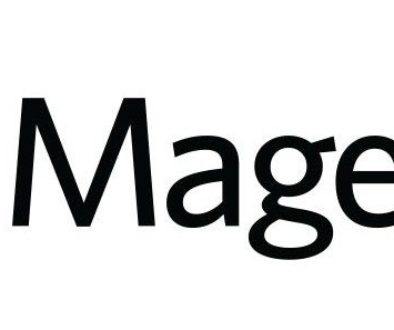Online Retail Report, Q4 2012

A review of key macroeconomic online retail trends sourced from comScore’s global panel of 2 million Internet users via behavioral tracking and custom surveys
Check out these findings from a comprehensive “state of the economy” compiled by the folks at comScore! Thanks to their efforts, some truly interesting figures have come to light from across the e-commerce spectrum. Here, we break down some wide-scale trends, zooming in on areas of note for U.S. online retailers.
The Big Picture
2012 Dollar Sales Growth in Billions:
- Retail spending rose 15% year over year, from $162B to $186B.
- Travel spending broke $100B for the first time, posting 9% growth from $94 to $103B.
In general, online retail sales growth continues to trump offline totals, with 14% Q4 year over year online growth outpacing Q4 total retail growth of 2% (excluding autos, gas, and food/beverage).
Another first: e-commerce broke 10% of all discretionary spending for the first time in Q4 2012. Typically, winter bodes well for e-commerce shares.
Consumer Perceptions of the Economy
- When asked, “How would you rate economic conditions today?”, only 42% of respondents rated the economy as “poor” in January 2013. While this number is by no means ideal, it marks the first time that “poor” was not the #1 response (44% replied “fair”).
- For the sixth consecutive quarter, rising prices remain the chief concern for consumers, followed by unemployment (at 47% and 31%, respectively).
Retailer and Product Category Overview
All key e-commerce metrics have shown solid growth compared with Q4 2011:
- Dollar sales are up 14%.
- Overall transactions are up 10%.
- Average dollars per buyer are up 8%.
By retail category, online sales posted encouraging growth:
- Mobile phones and plans grew 40%.
- Portable devices (e.g., tablets) grew 46%.
- Desktop computers continue a downward trend with a loss of 13%.
Perhaps unsurprisingly, Amazon averaged 115.2M monthly unique visitors in Q4 2012, a 3% growth. Compare:
- Apple.com Sites lost 1%, averaging 50M monthly unique visitors.
- Target Corporation lost 7%, averaging 33.6M monthly unique visitors.
- Lowes.com grew 14%, averaging 12.1M monthly unique visitors.
Flash sale sites are on fire, with most showing double-digit year over year growth:
- Zulily.com grew 72%, averaging 3.1K+ monthly unique visitors.
- Gilt.com grew 23%, averaging 2.2K+ monthly unique visitors.
- Myhabit.com grew 49%, averaging 1.1K+ monthly unique visitors.
Consumers’ Path to Purchase
Here are the top three answers for three categories of shopping tools:
- Traditional Tools: direct mail, magazines, newspapers.
- Digital Tools: “deal of the day” sites, digital coupons, Facebook.
- Mobile Tools: mobile brand websites, mobile coupons, mobile location-based services.
Using a different set of parameters, here are the top three answers for three common consumer purposes:
- “Saves Me Money”: digital coupons, online search engine, newspapers.
- “Saves Me Time”: online search engine, retailer website, digital coupons.
- “Helps Me with New Ideas”: retailer website, recommendations from friends/family, online search engine.
Digital Wallets
Digital wallets are a method of storing an individual’s payment credentials and facilitating rapid, secure transactions via a digital interface, usually mobile. As an emerging trend, exciting research points towards widespread adoption in the near future.
- 51% of consumers are currently aware of digital wallets besides PayPal. Of these, 39% don’t currently use them as a payment alternative. Combined with the 49% of consumers who are unaware, that totals 88% of users who don’t currently use digital wallets besides Paypal.
- An estimated 1 in 2 consumers will continue use of a digital wallet or will likely adopt a digital wallet in 2013 should the awareness gap be rectified via appropriate marketing campaigns.
Here are some demographics regarding the adoption of digital wallet applications:
- 67% of current users are male, 50%+ are in the 25-34 age bracket, 17% earn $150K+ annually, 49% consider themselves “tech-savvy”, and 42% use Apple smartphones.
- Prospects more closely mirror the average consumer: 51% are female, just under 30% are in the 25-34 age bracket, 7% earn $150K+ annually, 22% consider themselves “tech-savvy”, and 35% use Apple smartphones.
The overwhelming obstacle to consumer receptivity of digital wallets is security, with 47% of respondents raising concerns over the safety, theft, loss, or digital security of their phone.
Intriguingly, barriers to digital wallet adoption closely match those to ATM usage 30 years ago:
- Awareness
- Understanding of benefits
- Technology resistance
- POS infrastructure availability
- Security/privacy concerns
2012 Holiday Season
Holiday spending has bounced steadily back from a plunge to $28B in 2008 to a record $42.3B in 2012, with year over year growth of 14% between 2011 and 2012.
- Though there was a late season surge, December’s lull couldn’t bring the growth rate up to the predicted 17%.
2012 growth rates accelerated markedly over Thanksgiving and Black Friday (32% and 28% growth over 2012, respectively). These figures may be cannibalizing Cyber Monday, which only grew 17%.
In 2012, 12 days surpassed the $1B sales threshold. Of these, 4 fell within the week of Green Monday.
Comparing 5-year growth for the following periods, Thanksgiving Day has experienced the most dramatic boost, followed by Cyber Monday:
- Thanksgiving day: +132%
- Black Friday: +96%
- Cyber Monday: +100%
- Green Monday: +45%
- Full Season: +45%
Free shipping is quickly become an expected feature:
- While the percentage of e-commerce transactions offering free shipping has vacillated in recent years, it once again reached 50% for Q4 2012 (following the general pattern of a free shipping spike every holiday season).
- As of January 2013, 54% of consumers stated that they would cancel their purchase if they reached the end of an e-commerce transaction without being offered free shipping.
So, what changed between holiday 2011 and holiday 2012? The four S’s!
- Social Commerce—Pinterest reached an all-time high of 29M visitors.
- Smartphones—10M new 4G smartphones in Q4.
- Sit–Back Shopping—Tablet sales grew 46% year over year.
- Showrooming—Men who own smartphones showroom the most.
Showrooming Deep Dive
Some quick facts on this practice:
- 36% of consumers agreed that they engaged in showrooming after being shown the definition of the term.
- Why showroom? 74% seek to find a better price online.
- 46% of smartphone-owning respondents admitted to showrooming, compared with only 27% of non-smartphone-owners.
- Consumer electronics are more likely targets than apparel for showrooming overall.
While showrooming, consumers use their smartphones to:
- Search for better prices (53%)
- Search for item information (42%)
- Look for online promotions/deals (37%)
Amazingly, four in ten showroomers never planned to buy in person! 40% of showroomers confided that they planned to buy online from the get-go, but wanted to see the item in person before ordering.
Overall, it seems that millennials are driven by convenience, while baby-boomers are driven by price points in motivating their purchasing decisions while showrooming.


